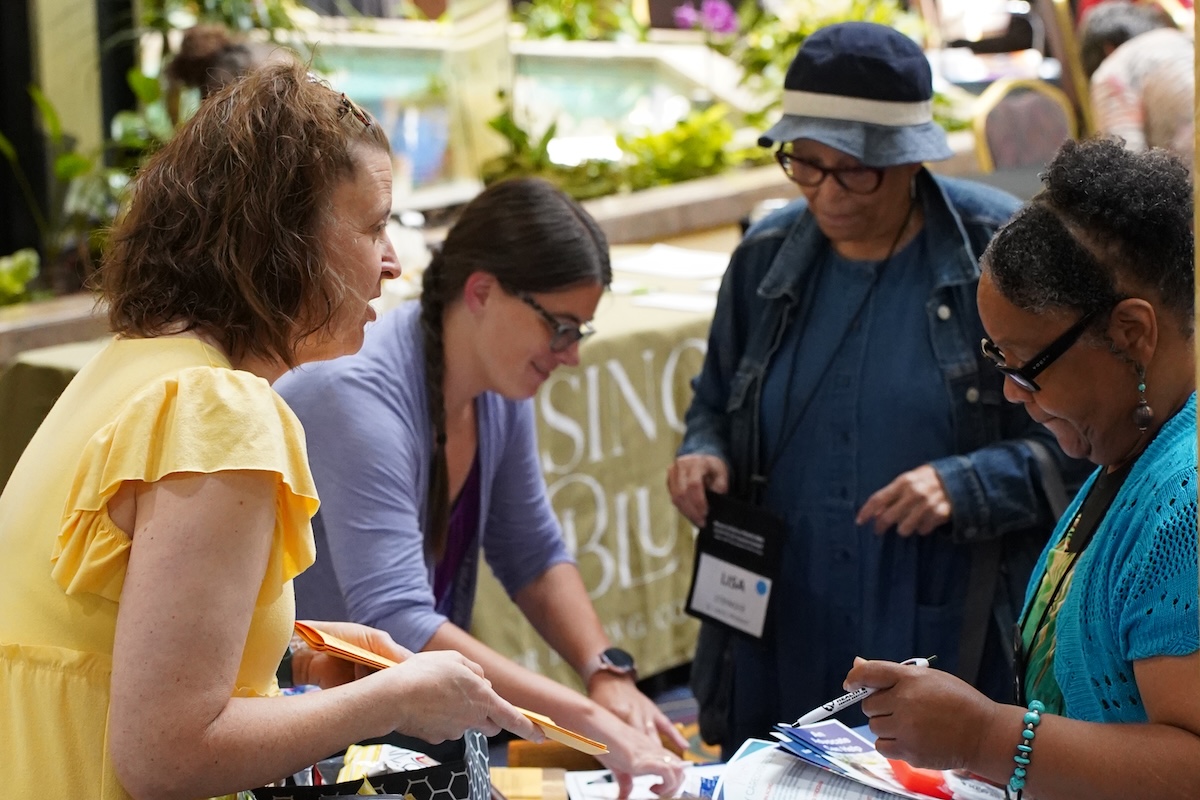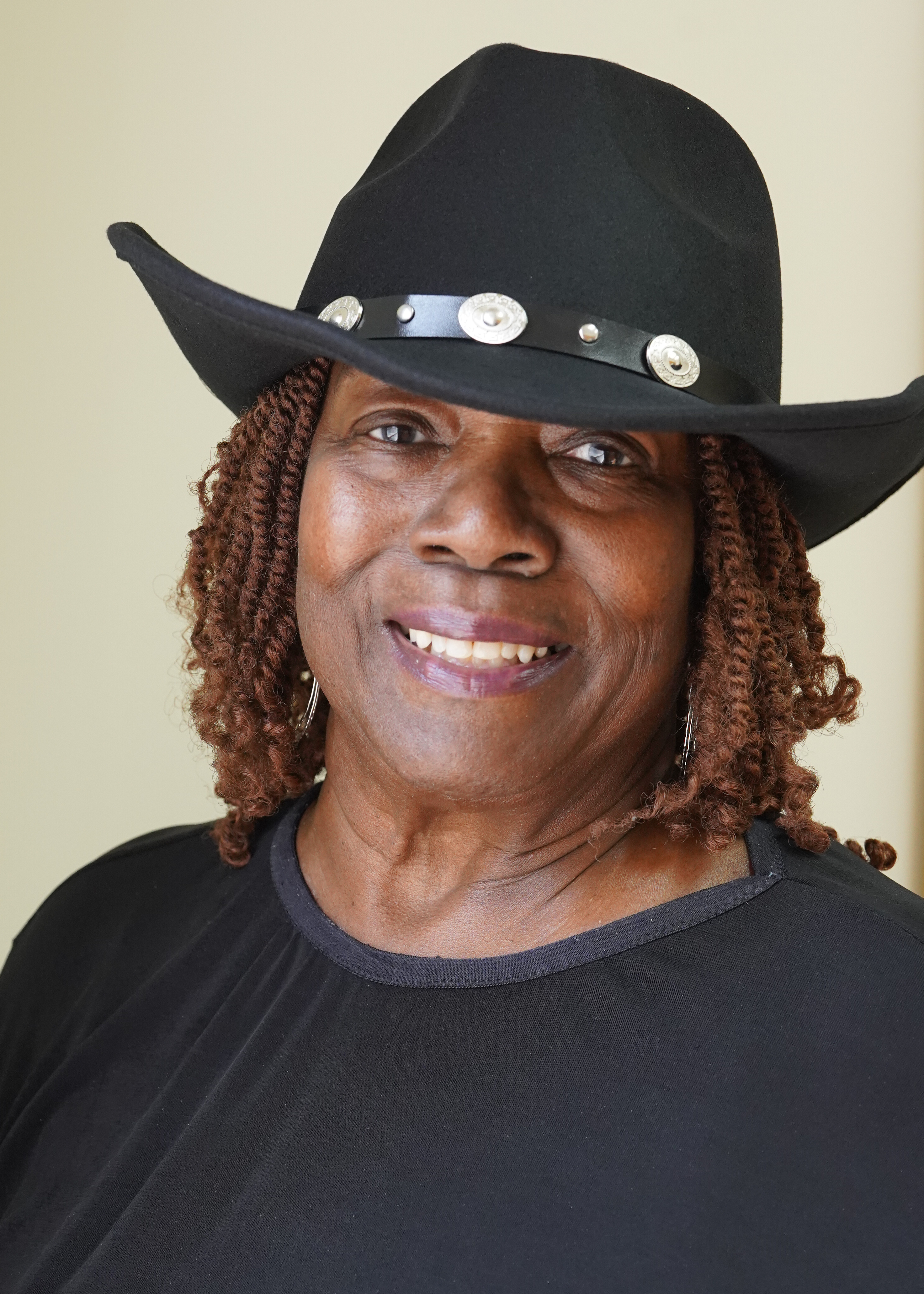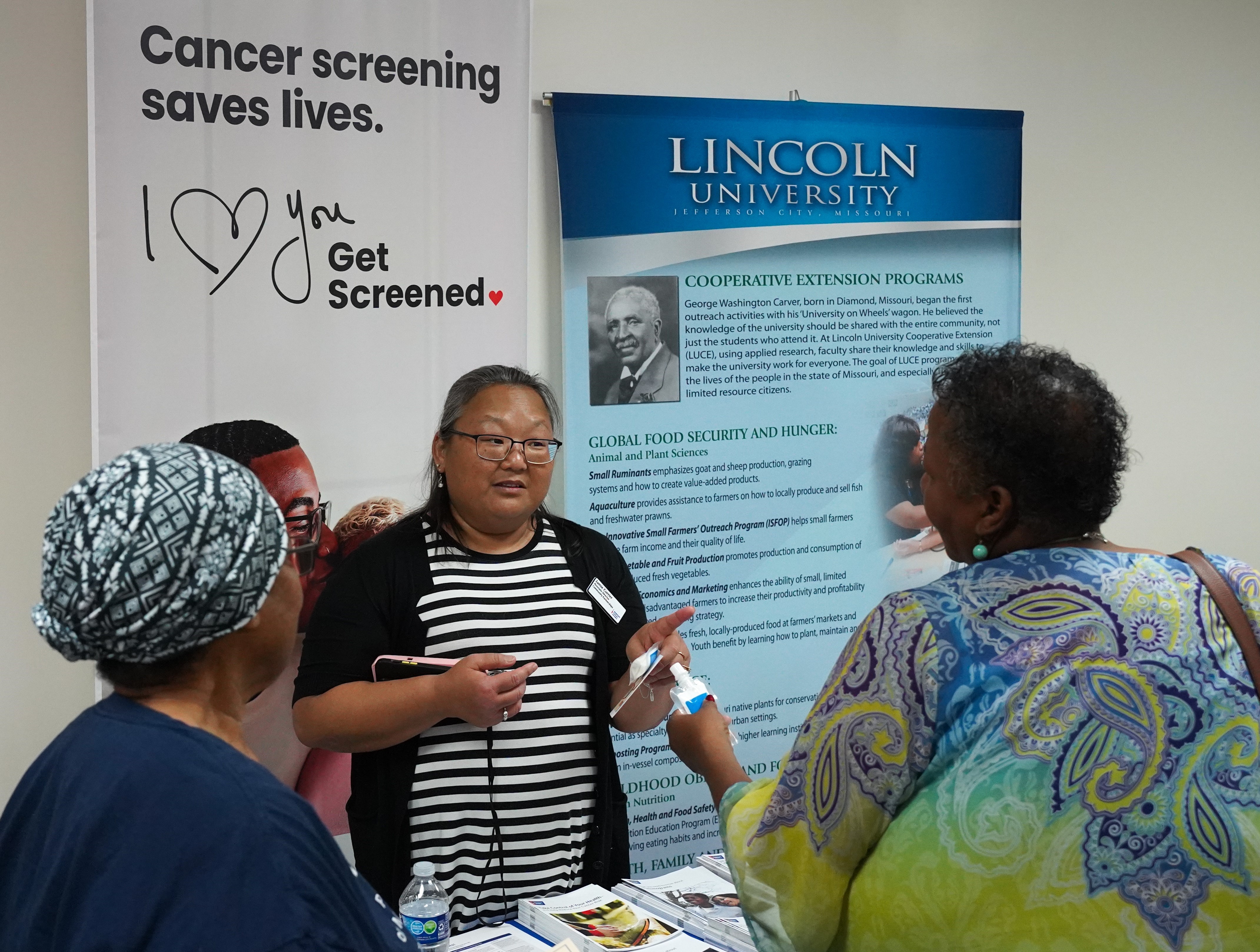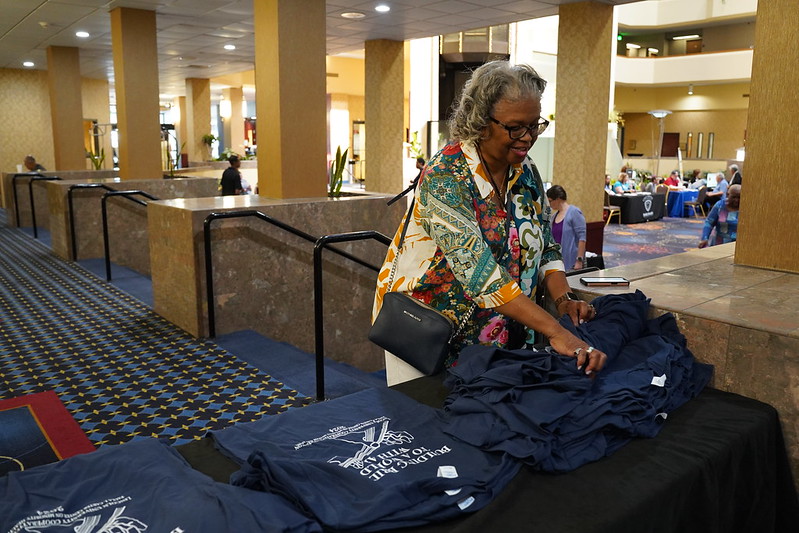Building Healthier Communities Together: The Impact of Partnerships in the 1890 Mission
Office of Communications and Marketing
Young Hall
820 Chestnut Street
Jefferson City, MO 65101
 Missouri Department of Health and Senior Services staff connect with attendees during the annual institute focused on health and aging, sharing health resources and gathering community feedback.
Missouri Department of Health and Senior Services staff connect with attendees during the annual institute focused on health and aging, sharing health resources and gathering community feedback.
For over three decades, the Paula J. Carter Center on Health and Aging (PJCCHA) at Lincoln University Cooperative Extension has collaborated with the Missouri Department of Health and Senior Services (DHSS) to provide health education to underserved communities. Through this partnership, they bring the 1890 land-grant mission to life by connecting individuals to resources, raising health awareness and creating meaningful change across Missouri.
"The Department of Health has been with us from the beginning, offering expertise and guidance that shaped our ability to respond to the needs of the communities we serve," says PJCCHA Director Yvonne Matthews. "Their support has been instrumental in advancing the work we do."
 Yvonne Matthews helps connect communities with vital health information through her leadership at Lincoln University Cooperative Extension’s Paula J. Carter Center on Health and Aging.
Yvonne Matthews helps connect communities with vital health information through her leadership at Lincoln University Cooperative Extension’s Paula J. Carter Center on Health and Aging.
DHSS plays an active role in shaping the direction of the Paula J. Carter Center. Staff from several of its divisions, including the Division of Minority Health and Chronic Disease Prevention, serve on the Center’s advisory board. They help guide PJCCHA’s initiatives and ensure its community outreach is supported with the necessary resources.
A key aspect of this ongoing collaboration is the Center's continued emphasis on critical health issues, including brain health. When Matthews learned that Black women are much more likely to have dementia than other groups in the population, she took action. With support from DHSS, the Center has organized webinars and workshops on brain health. It also brings in subject-matter experts to help older minority populations better understand the risk factors and early warning signs of brain-related conditions.
Cancer prevention is another area where the Center’s partnership with DHSS has made a lasting impact. Much of this work has been accomplished through the efforts of lay leaders. Lay leaders — important members of Missouri communities trained by the Center — are entrusted to take what they’ve learned and share it with others. As a result, lay leaders help raise awareness of health risks and encourage better habits within their own networks.
 An exhibitor shares cancer prevention information with attendees at the Paula J. Carter Center on Health and Aging’s community health event.
An exhibitor shares cancer prevention information with attendees at the Paula J. Carter Center on Health and Aging’s community health event.
"Our lay leaders return to their communities and find ways to teach," says Matthews. "They get excited because they're bringing knowledge that makes a real difference."
As part of their ongoing education, lay leaders bring insights from training provided by DHSS to other partnerships. One such collaboration is with Washington University in St. Louis, where lay leaders are trained to give presentations on cancer prevention. When they worked with Washington University trainers to further develop the curriculum, lay leaders shared their knowledge of thirdhand smoke and why they thought it was important to include it in their presentations. Thirdhand smoke refers to the harmful residue left on furniture, clothing and carpets that can still affect non-smokers. The Washington University trainers wholeheartedly agreed and included information on this aspect of cancer prevention in the curriculum.
Additionally, lay leaders serve as a bridge between the community and DHSS, gathering valuable insights directly from the people they serve. As lay leaders engage with community members, they learn about the health challenges people face and the topics that interest them the most. This feedback is then shared with DHSS, helping them understand the community's needs and shaping future programming.

PJCCHA’s Glenda Meachum-Cain arranges T-shirts for participants at the 2024 Missouri Institute on Minority Aging (MIMA) Conference.
Through these ongoing partnerships, health education continues to evolve to meet the needs of Missouri's underserved communities. The 1890 land-grant mission thrives due to the collaboration and trust built through these partnerships, providing communities with the knowledge they need to lead healthier lives.
“Implied in the term collaboration is the essence of cooperative extension,” says Matthews. “For partners to achieve a shared objective requires cooperation, commitment to a shared goal, collective effort, and an understanding that we are better together than we are apart. Cooperative extension and collaboration go hand in hand.”
